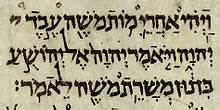"For God Made Them Rejoice" -- Nehemiah 12:27-43
 Wednesday, February 22, 2017 at 10:15AM
Wednesday, February 22, 2017 at 10:15AM  The Twentieth in a Series of Sermons on Ezra-Nehemiah
The Twentieth in a Series of Sermons on Ezra-Nehemiah
What comes next for Jerusalem and for the people of Israel after the Reformation which broke out in Israel in the days of Ezra-Nehemiah? Jerusalem and its temple were destroyed in 587 B.C. by the Babylonian king Nebuchadnezzer. Most of the city’s inhabitants were taken captive and exiled to Babylon, until 537 when Cyrus, a Persian who captured Babylon, issued his famous decree for the Jews to be allowed to return home to Jerusalem. Although the foundation of the temple was laid in 536, the temple was not completed until 516. In 445 B.C. Nehemiah arrived in Jerusalem to inspect the city’s walls which lay in ruins. Leading the now-returned exiles in a massive rebuilding effort, the walls and gates of the city were rebuilt in the span of 52 days–a remarkable accomplishment. But the city itself–that portion of Jerusalem lying within the gates–still lay largely in ruins with very few people dwelling amidst the rubble. If Jerusalem is to function as Israel’s capital and fulfill its role in redemptive history, then the city must inhabited once again. The future of Israel is inescapably tied to the fate of its capital.
As we work our way though the entirety of chapters 11-12 of Nehemiah, we come to a number of lengthy lists of family names, tribal boundaries, as well as a list of priests and Levites. These lists serve to tie the people living in and around Jerusalem in the days of Ezra and Nehemiah to the great promises YHWH made to his people in the days of Abraham, Moses, and David. Everyone knew that YHWH had promised to make this people into a great nation dwelling in the land of promise–but how will YHWH accomplish this when the Jews are in such poor shape both as a people and a nation? Their capital city is in ruins and uninhabited. The people are vassals of a Persian king. What happens next? What does the future of Israel hold?
The eleventh and twelfth chapters of Nehemiah are the author’s account of what happened in the days after Jerusalem’s walls and gates had been rebuilt, and after the people had rededicated themselves to YHWH by renewing their covenant with him (chapters 8-10). How was the city–which had been left desolate and largely in ruins–to be repopulated now that sufficient infrastructure was in place for the city to function as habitable space? How does a ruined city like Jerusalem ever recover?
Before we answer that question, there are a number of chronological and historical issues to be found in these chapters, but any discussion of them fall well beyond the scope of our time. But let me say by way of summary that the supposed problems raised by critical scholars have all been capably addressed, and there are good and plausible answers for all the supposed contradictions they find in these lists. Those which do arise are those found by people combing the Bible only for any hint of error, while there are good and reasonable explanations which critical scholars conveniently ignore or otherwise overlook because the facts do not fit their theories–an attitude which is all too typical.
To read the rest of this sermon, Click Here


Reader Comments